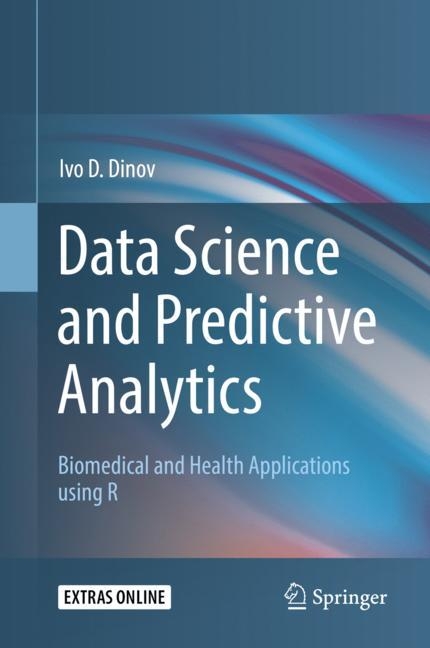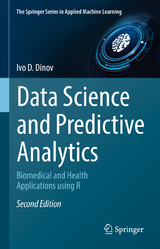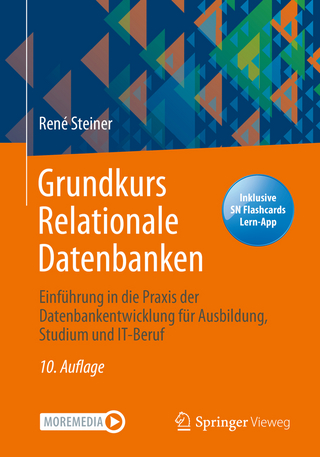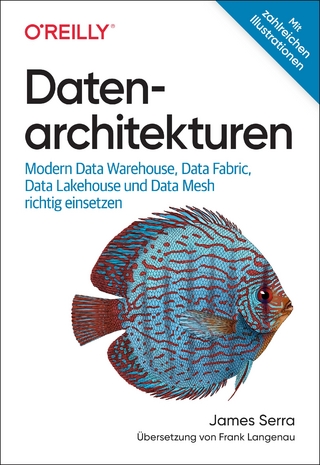
Data Science and Predictive Analytics
Springer International Publishing (Verlag)
978-3-319-72346-4 (ISBN)
- Titel erscheint in neuer Auflage
- Artikel merken
Exposing the enormous opportunities presented by the tsunami of Big data, this textbook aims to identify specific knowledge gaps, educational barriers, and workforce readiness deficiencies. Specifically, it focuses on the development of a transdisciplinary curriculum integrating modern computational methods, advanced data science techniques, innovative biomedical applications, and impactful health analytics.
The content of this graduate-level textbook fills a substantial gap in integrating modern engineering concepts, computational algorithms, mathematical optimization, statistical computing and biomedical inference. Big data analytic techniques and predictive scientific methods demand broad transdisciplinary knowledge, appeal to an extremely wide spectrum of readers/learners, and provide incredible opportunities for engagement throughout the academy, industry, regulatory and funding agencies.
The two examples below demonstrate the powerful need for scientific knowledge, computational abilities, interdisciplinary expertise, and modern technologies necessary to achieve desired outcomes (improving human health and optimizing future return on investment). This can only be achieved by appropriately trained teams of researchers who can develop robust decision support systems using modern techniques and effective end-to-end protocols, like the ones described in this textbook.
- A geriatric neurologist is examining a patient complaining of gait imbalance and posture instability. To determine if the patient may suffer from Parkinson's disease, the physician acquires clinical, cognitive, phenotypic, imaging, and genetics data (Big Data). Most clinics and healthcare centers are not equipped with skilled data analytic teams that can wrangle, harmonize and interpret such complex datasets. A learner that completes a course of study using this textbook will have the competency and ability to manage the data, generate a protocol for deriving biomarkers, and provide an actionable decision support system. The results of this protocol will help the physician understand the entire patient dataset and assist in making a holistic evidence-based, data-driven, clinical diagnosis.
- To improve the return on investment for their shareholders, a healthcare manufacturer needs to forecast the demand for their product subject to environmental, demographic, economic, and bio-social sentiment data (Big Data). The organization's data-analytics team is tasked with developing a protocol that identifies, aggregates, harmonizes, models and analyzes these heterogeneous data elements to generate a trend forecast. ThisDr. Ivo Dinov is the Director of the Statistics Online Computational Resource (SOCR) at the University of Michigan and is an expert in mathematical modeling, statistical analysis, high-throughput computational processing and scientific visualization of large datasets (Big Data). His applied research is focused on neuroscience, nursing informatics, multimodal biomedical image analysis, and distributed genomics computing. Examples of specific brain research projects Dr. Dinov is involved in include longitudinal morphometric studies of development (e.g., Autism, Schizophrenia), maturation (e.g., depression, pain) and aging (e.g., Alzheimer’s disease, Parkinson’s disease). He also studies the intricate relations between genetic traits (e.g., SNPs), clinical phenotypes (e.g., disease, behavioral and psychological test) and subject demographics (e.g., race, gender, age) in variety of brain and heart related disorders. Dr. Dinov is developing, validating and disseminating novel technology-enhanced pedagogical approaches for science education and active learning.
1 Introduction.- 2 Foundations of R.- 3 Managing Data in R.- 4 Data Visualization.- 5 Linear Algebra & Matrix Computing.- 6 Dimensionality Reduction.- 7 Lazy Learning: Classification Using Nearest Neighbors.- 8 Probabilistic Learning: Classification Using Naive Bayes.- 9 Decision Tree Divide and Conquer Classification.- 10 Forecasting Numeric Data Using Regression Models.- 11 Black Box Machine-Learning Methods: Neural Networks and Support Vector Machines.- 12 Apriori Association Rules Learning.- 13 k-Means Clustering.- 14 Model Performance Assessment.- 15 Improving Model Performance.- 16 Specialized Machine Learning Topics.- 17 Variable/Feature Selection.- 18 Regularized Linear Modeling and Controlled Variable Selection.- 19 Big Longitudinal Data Analysis.- 20 Natural Language Processing/Text Mining.- 21 Prediction and Internal Statistical Cross Validation.- 22 Function Optimization.- 23 Deep Learning Neural Networks.- 24 Summary.- 25 Glossary.- 26 Index.- 27 Errata.
lt;p>"Data Science and Predictive Analytics is an effective resource for those desiring to extend their knowledge of data science, R or both. The book is comprehensive and serves as a reference guide for data analytics, especially relating to the biomedical, health care and social fields." (Mindy Capaldi, International Statistical Review, Vol. 87 (1), 2019)
| Erscheinungsdatum | 13.04.2018 |
|---|---|
| Zusatzinfo | XXXIV, 832 p. 1443 illus., 1245 illus. in color. |
| Verlagsort | Cham |
| Sprache | englisch |
| Maße | 155 x 235 mm |
| Gewicht | 1863 g |
| Themenwelt | Mathematik / Informatik ► Informatik ► Datenbanken |
| Mathematik / Informatik ► Informatik ► Netzwerke | |
| Schlagworte | Big Data • Big Data methods • controlled variable selection • Cross-validation • Data Management • Data Science • Deep learning • hands-on machine learning • health analytics • machine learning • Natural Language Processing • Neural networks • predictive analytics • R • Statistical Computing • statistical learning in R • Streaming • Text Mining • Visualization |
| ISBN-10 | 3-319-72346-4 / 3319723464 |
| ISBN-13 | 978-3-319-72346-4 / 9783319723464 |
| Zustand | Neuware |
| Informationen gemäß Produktsicherheitsverordnung (GPSR) | |
| Haben Sie eine Frage zum Produkt? |
aus dem Bereich



